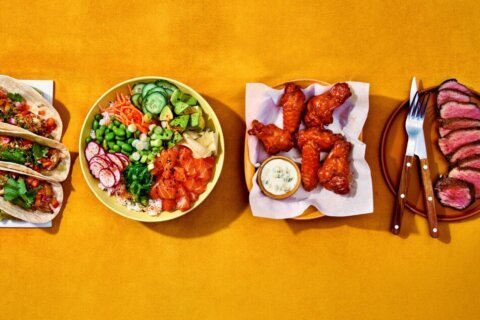Living alone has its benefits, from never having to wait for the bathroom to choosing all your decor.
But it also has its drawbacks. Single folks pay the rent alone. And they can’t rely on anybody else to cover the costs of furniture or home repairs.
Plus, it’s tougher to cook healthy, cost-efficient meals when you live solo.
Grocery stores often sell family-sized packages of food. And recipes typically yield four servings or more. Single people are generally stuck buying big bundles of fresh ingredients — and then watching them rot in the fridge as they fail to eat them quickly enough.
“It’s a special challenge cooking for one,” says Leanne Brown, author of “Good and Cheap: Eat Well on $4/Day.”
Fortunately, with a little planning and a few new techniques, there are ways to cook healthfully, cheaply and efficiently as a single home cook. Here’s how.
[See: 12 Ways to Be a More Mindful Spender.]
Do some casual planning. “It’s easy to self-sabotage when you don’t plan ahead,” says Matt Holloway, co-creator of “Thug Kitchen,” a blog and series of plant-based cookbooks.
But have no fear. Planning meals for the week doesn’t have to involve foot-long shopping lists and complex spreadsheets.
Instead, try cooking homemade meals on Monday, Tuesday and Wednesday, says Avi Shemtov, chef and author of “The Single Guy Cookbook: How to Cook Comfort Food Favorites Faster, Easier and Cheaper than Going Out.” Then plan to repurpose the leftovers into new dishes — for example reforming leftover salmon into a salmon cake — for the remainder of the week.
If you’re buying ingredients like herbs, which many recipes use sparingly, consider how you can add the extra sprigs into other dishes during the week to eat them before they rot. (Wrapping fresh herbs in a paper towel or placing them in a jar of water in the fridge may also extend their lives.)
“The biggest issue is that grocery stores just don’t sell stuff in portions for one person,” Shemtov says.
Divide your list into three categories, says Michelle Davis, co-creator of “Thug Kitchen.” On the left, list fresh vegetables and fruits (and aim to make it the longest category). In the middle, list beans, pastas and rices. On the right, list foods from the freezer section. “That’s an easy circle to make in the grocery store,” Davis says. “You won’t zigzag back and forth.”
[See: 10 Money Leaks to Shut Down Now.]
Dig into double-duty foods. When you’re browsing the supermarket shelves, aim to buy foods that can be re-used in lots of ways. For example, instead of buying romaine lettuce to add some crunchy greens to your sandwiches, buy spinach, Shemtov says.
Here’s why: Spinach is more versatile than romaine. After using it to top your sandwich, you can cook it into a dinnertime side dish, add it to an omelet or mix it with stir-fry vegetables. The extra romaine lettuce, on the other hand, will just slowly turn to brown goop in your crisper.
Learn to love leftovers. Commit to repurposing the meals you cook into fresh dishes later in the week.
For example, consider whipping up taco filling or homemade marinara sauce on Monday. That taco filling may be a salad fixing on night No. 2 and a nacho topping on night No. 3. The homemade pasta sauce could be re-used on a pizza and then folded into lasagna the next night.
Store leftovers in your freezer and defrost them after a long day when you don’t feel like cooking, experts say.
[See: How to Live on $13,000 a Year.]
Stock a reasonable pantry. Having a few foods on hand makes it easy to whip up a good meal instead of visiting Chipotle or shelling out for overpriced prepared food.
Brown recommends always having a carton of eggs in the fridge. Mix them with rice, frozen peas, hot sauce and a few good spices, such as curry powder and cumin, to whip up a tasty fried rice dish at a moment’s notice, Brown says.
Produce that lasts a long time, such as onions, shallots, potatoes, sweet potatoes and lemons, are also good to have on hand and can be used in loads of recipes.
Shemtov recommends keeping canned beans, like chickpeas, stocked in the pantry. “They can go into almost anything and have great protein,” he says.
Buying frozen vegetables, such as peas and corn, makes it easier to integrate veggies into a dish without needing to buy fresh.
Even when it seems like a pain to cook for just yourself, remember that the skills you learn as a single chef will translate beautifully if your life transitions to include a partner and kids.
Says Shemtov: “The best way to save money in the kitchen is to learn how to cook.”
More from U.S. News
11 Expenses Destroying Your Budget
12 Shopping Tricks to Keep You Under Budget
Budget-Friendly Foods That Pack a Punch
Cooking for One: Feeding Yourself Without Breaking the Bank originally appeared on usnews.com







